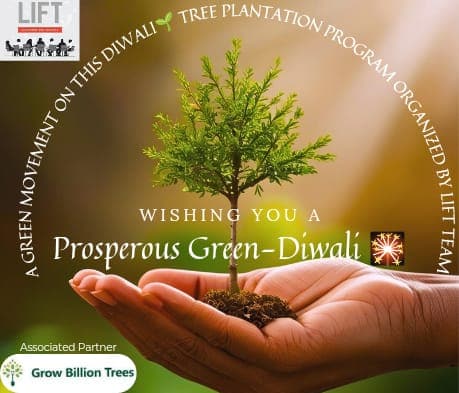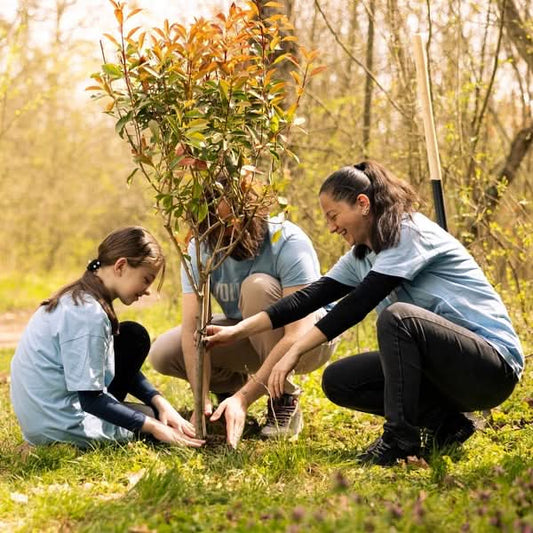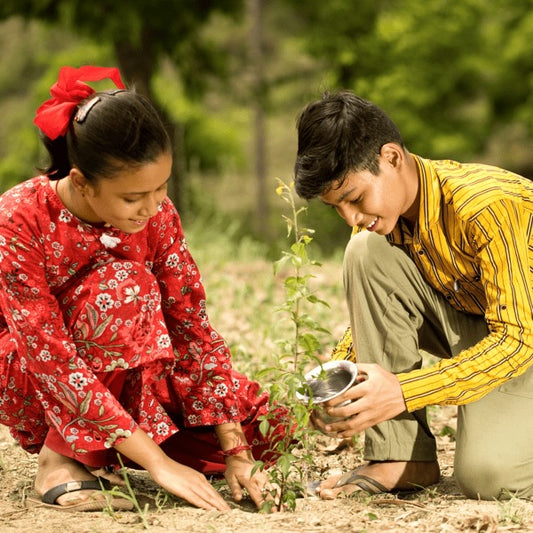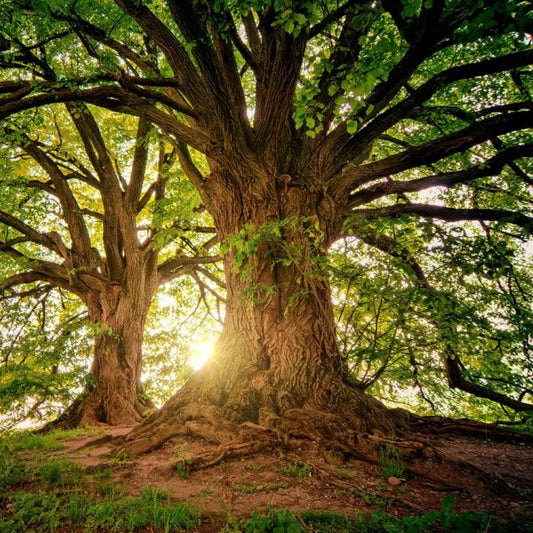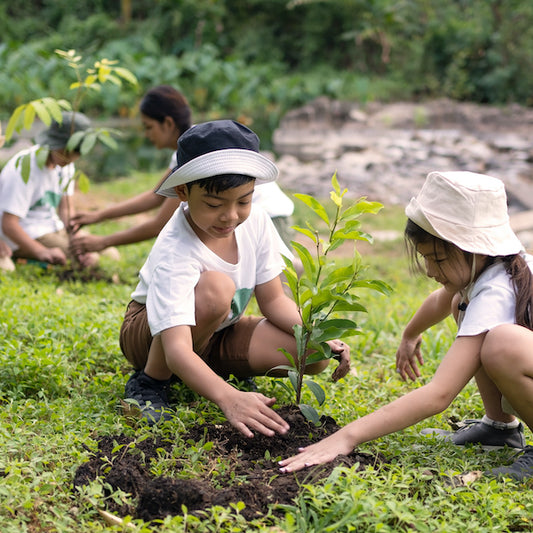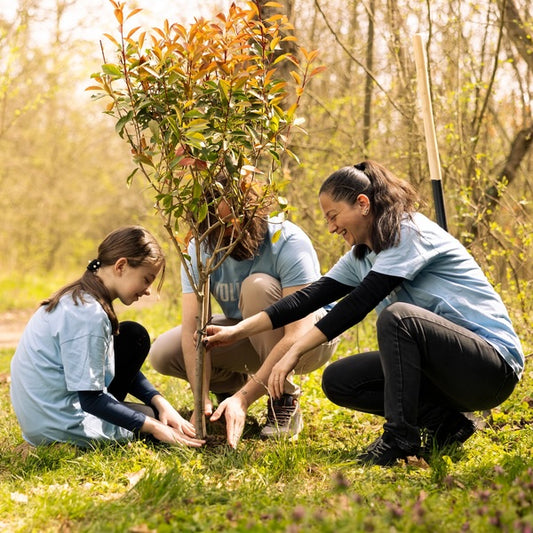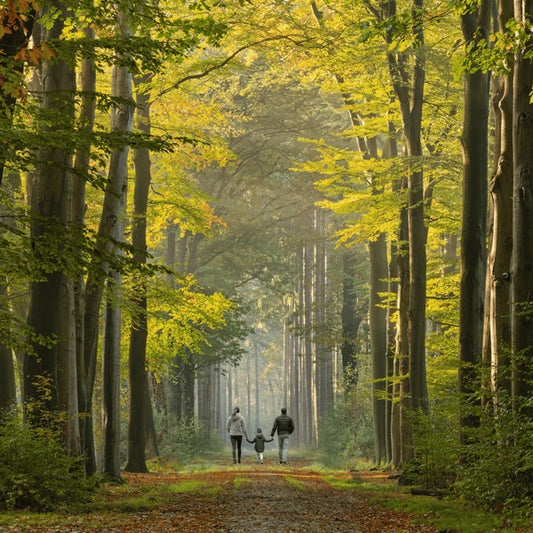Living Memorials: Rajpal Singh Duggal’s Urban Forest in Remembrance
Rajpal Singh Duggal’s tree plantation initiative is a heartfelt tribute to his loved ones, carried out in the concept of urban forests. In their lovin Read more
Digital Forest
Forest with 37 Trees planned
Want to plant Trees for Delhi, NCR now?
Plant a Tree @ 799Living Memorials: Rajpal Singh Duggal’s Urban Forest in Remembrance
Rajpal Singh Duggal’s tree plantation initiative is a heartfelt tribute to his loved ones, carried out in the concept of urban forests. In their loving memory, he planted trees as a symbol of enduring love and remembrance. This initiative not only commemorates those dear to him but also contributes to the creation of a greener, more sustainable environment within urban spaces. The trees planted serve as a living legacy, offering environmental benefits and enriching the urban landscape, while fostering a deeper connection to nature. Rajpal's act reflects a meaningful and enduring gesture of love, ensuring that the memory of his loved ones continues to grow and thrive in the form of a flourishing urban forest.
Tree Plantation Date
9th April 2024
Plantation Location
Noida, Uttar Pradesh
Trees Planted
Total Count: 37 Trees
Forest Type: Urban Forest
Rajpal Singh Duggal’s urban forest tree plantation initiative stands as a heartfelt tribute to the cherished memories of his loved ones. In their loving remembrance, he planted trees that not only honor their legacy but also contribute to a greener and more sustainable future. By embracing the urban forest concept, this initiative transforms city landscapes into lush green havens, promoting environmental balance while symbolizing enduring love and connection. Each tree serves as a living memorial, embodying the spirit of those he holds dear and leaving an indelible mark on both nature and the community. Through this meaningful act, Rajpal Singh Duggal celebrates life, love, and sustainability in a deeply personal and impactful way.
Advantages Of Urban Forest
Preserving the Legacy of Loved Ones
By planting trees in the loving memory of his loved ones, Rajpal Singh Duggal has created a timeless tribute that serves as a living legacy. Each tree represents a symbol of enduring love, ensuring that the memory of his loved ones continues to grow and thrive in the natural world.
Enhancing Urban Green Spaces
The initiative contributes significantly to urban forest development, transforming concrete-dominated landscapes into lush green sanctuaries. This enhances the aesthetic appeal of urban areas and fosters biodiversity by creating habitats for birds, insects, and other wildlife.
Promoting Environmental Sustainability
Urban forests play a vital role in combating climate change. The planted trees absorb carbon dioxide, release oxygen, and help reduce the urban heat island effect. Rajpal Singh Duggal’s efforts directly contribute to a healthier and more sustainable environment.
Improving Air Quality
Tree plantations in urban forests help filter pollutants from the air, including particulate matter and harmful gases, resulting in improved air quality. This has direct health benefits for city residents, including reduced respiratory issues and better overall well-being.
Providing Psychological and Emotional Benefits
The presence of green spaces and trees in urban areas is known to reduce stress, promote mental well-being, and enhance emotional resilience. By dedicating this initiative to his loved ones, Rajpal Singh Duggal offers not only a personal tribute but also a source of solace and peace for others.
Community Engagement and Inspiration
This initiative inspires others to engage in similar acts of environmental stewardship. It serves as a model for how personal gestures can have a broader impact on the community by encouraging collective action toward environmental conservation.
Reducing Urban Challenges
Urban forests help mitigate challenges like flooding by improving water absorption and reducing soil erosion. Rajpal Singh Duggal’s initiative contributes to these environmental benefits, making cities more resilient to climate-related challenges.
Fostering Connection to Nature
Planting trees in remembrance of loved ones creates a meaningful connection between people, nature, and memories. This initiative encourages urban dwellers to reconnect with the natural world and understand its importance in honoring life and legacy.
Activities During Tree Plantation
During Rajpal Singh Duggal’s tree plantation initiative in the urban forest concept, volunteers undertook all the activities on his behalf, ensuring the success of this heartfelt endeavor. The site was meticulously prepared in advance, with soil enrichment, pit digging, and layout planning completed to create a suitable environment for the saplings. On the day of the initiative, volunteers actively participated in planting a diverse range of native tree species, carefully positioning each sapling to ensure optimal growth and sustainability. They followed it up with mulching to retain soil moisture and prevent weed growth, along with watering the newly planted trees. The collective effort of the volunteers embodied the spirit of dedication and love, making this initiative a meaningful tribute to Rajpal Singh Duggal’s loved ones while fostering a greener and healthier urban landscape.
Tree Plantation Purpose
Sustainable Development Goals (SDGs) Achieved Through Rajpal Singh Duggal’s Tree Plantation Initiative
1. SDG 1: No Poverty
Urban forests can contribute to alleviating poverty by improving local ecosystems, enhancing property values, and creating economic opportunities. Tree plantation initiatives like Rajpal Singh Duggal’s encourage green jobs, such as in landscaping and forestry, which can benefit underprivileged communities by fostering sustainable economic growth.
2. SDG 3: Good Health and Well-Being
Trees improve air quality by filtering pollutants and releasing oxygen, reducing health risks such as respiratory and cardiovascular diseases. Rajpal Singh Duggal’s initiative also enhances mental health by creating tranquil green spaces where people can relax, reducing urban stress and promoting overall well-being.
3. SDG 6: Clean Water and Sanitation
Trees play a crucial role in improving water quality by reducing surface runoff, minimizing soil erosion, and filtering rainwater. Duggal’s plantation initiative ensures better water retention in the urban ecosystem, contributing to sustainable water resource management.
4. SDG 7: Affordable and Clean Energy
The urban forest concept helps lower energy consumption in urban areas by providing natural cooling through shade and reducing the urban heat island effect. This indirectly decreases the reliance on air conditioning, promoting energy efficiency and cleaner energy use.
5. SDG 8: Decent Work and Economic Growth
Tree plantation initiatives generate employment opportunities in green industries such as forestry, ecosystem management, and urban landscaping. By involving volunteers and professionals in his initiative, Duggal’s efforts contribute to environmentally sustainable economic activities.
6. SDG 9: Industry, Innovation, and Infrastructure
Urban forests represent innovative urban infrastructure that integrates nature into cities, improving environmental sustainability while fostering greener, more sustainable development. Duggal’s initiative serves as an example of how innovation can transform cityscapes into ecological hubs.
7. SDG 10: Reduced Inequalities
By creating inclusive green spaces accessible to everyone, Duggal’s urban forest initiative promotes equity in urban settings. These spaces benefit communities of all socioeconomic backgrounds, fostering equality and social cohesion.
8. SDG 11: Sustainable Cities and Communities
Rajpal Singh Duggal’s urban forest initiative contributes to creating sustainable urban environments by enhancing biodiversity, reducing urban heat, and mitigating climate-related challenges. It also improves the quality of life by providing clean, green spaces for city residents.
9. SDG 12: Responsible Consumption and Production
This initiative emphasizes eco-friendly practices, such as using native tree species and sustainable planting techniques. It showcases responsible approaches to urban development while minimizing environmental impact and promoting the efficient use of resources.
10. SDG 13: Climate Action
Trees are natural carbon sinks that absorb carbon dioxide and help combat climate change. Duggal’s tree plantation initiative mitigates the effects of urbanization by reducing greenhouse gas emissions and supporting global climate goals.
11. SDG 15: Life on Land
The trees planted under this initiative restore degraded urban ecosystems, support biodiversity, and provide habitats for birds, insects, and other wildlife. Rajpal Singh Duggal’s efforts align with the sustainable management of terrestrial ecosystems and the conservation of natural habitats.
12. SDG 17: Partnerships for the Goals
Rajpal Singh Duggal’s partnership with Grow Billion Trees exemplifies the power of collaboration in achieving SDG 17: Partnerships for the Goals. By joining forces, they have leveraged shared expertise, resources, and a common vision to create a meaningful impact through urban forest development. This collaboration has enabled the effective planning and execution of the tree plantation initiative, ensuring the use of sustainable practices and native species that enhance biodiversity and ecosystem health. The partnership not only honors Duggal’s loved ones through a living tribute but also fosters collective action toward combating climate change, improving urban resilience, and promoting environmental stewardship. Together, they have set a benchmark for how synergistic partnerships can drive sustainable development and amplify global efforts toward a greener future.
ESGs Achieved Through Urban Forest
Environmental (E)
Rajpal Singh Duggal’s tree plantation initiative significantly contributes to environmental sustainability by enhancing urban biodiversity and combating climate change. The trees planted in the urban forest sequester carbon dioxide, improve air quality, and mitigate the urban heat island effect, making cities more livable. By selecting native tree species, the initiative promotes ecological balance, supports local wildlife, and restores degraded urban landscapes. Additionally, this effort helps in reducing soil erosion, enhancing water retention, and protecting water resources, showcasing a comprehensive commitment to preserving and improving the environment for future generations.
Social (S)
This initiative fosters a sense of community and environmental stewardship by creating green spaces that benefit urban residents. Urban forests provide serene environments that improve mental well-being, encourage physical activity, and bring people closer to nature. By planting trees in remembrance of his loved ones, Rajpal Singh Duggal has created a deeply personal and meaningful contribution that inspires others to engage in socially responsible practices. The involvement of volunteers further strengthens community bonds and raises awareness about the importance of sustainable urban development, making this initiative a social catalyst for positive change.
Governance (G)
The initiative reflects strong governance principles through meticulous planning, transparent execution, and a focus on long-term sustainability. By collaborating with Grow Billion Trees and engaging volunteers, the project underscores accountability and shared responsibility in achieving its objectives. The pre-prepared site and efficient management of resources highlight a structured and well-governed approach to urban forest development. This commitment to governance ensures the initiative’s enduring impact and serves as a model for how individuals and organizations can responsibly contribute to environmental and social well-being.
Commitment by Grow Billion Trees
Grow Billion Trees is committed to driving sustainable plantation efforts, ensuring every initiative aligns with key environmental objectives and promotes long-term ecological balance. We focus on selecting native tree species that are well-adapted to local ecosystems, ensuring a higher survival rate and stronger environmental impact.
To maintain plant health and longevity, Grow Billion Trees emphasizes continuous maintenance and regular monitoring of the plantations. This approach helps ensure that each tree thrives, contributing effectively to both biodiversity and climate resilience.
Transparency is a core principle in our operations. Clients receive comprehensive reports, including geo-tagging of planted trees, survival rate updates, and ongoing progress reports. This level of openness allows clients to track the direct impact of their contributions, reinforcing trust and accountability.
Through our dedication to sustainable practices, Grow Billion Trees ensures that every plantation project leaves a lasting positive footprint on both the environment and the local communities it serves.
Summary
Rajpal Singh Duggal's tree plantation initiative, rooted in the urban forest concept, serves as a heartfelt tribute to his loved ones. By planting trees in their loving memory, this initiative not only honors their legacy but also contributes to environmental sustainability and urban greenery. The project emphasizes the use of native species to enhance biodiversity and improve air quality, while fostering a serene and natural environment for city dwellers. With the site prepared beforehand, volunteers carried out the plantation activities, showcasing a collective effort toward ecological restoration. This meaningful endeavor not only preserves cherished memories but also promotes a greener, healthier future for generations to come.
Trees for Corporates
Trending
Most Popular
1. Tree Plantation Benefits for Individuals
Planting trees isn’t just a hobby; it’s a full-on superhero gig! Trees fight pollution, cool the air, and boost mental health, all while looking fabulous. For individuals, this translates to cleaner lungs, calmer minds, and even reduced electricity bills (hello, natural shade!). Plus, there’s nothing more satisfying than telling your friends, “I planted that tree!” It’s the ultimate flex and your eco-legacy rolled into one. In an urban forest, your tree can be a part of the green army fighting climate change. Who knew saving the planet could feel so personal?
2. Urban Forest and Climate Change
reducing the urban heat island effect and making the planet a little cooler (literally and figuratively).
3. Sustainability Through Urban Forests
Urban forests are the poster children of sustainability. They provide shade, improve air quality, and boost biodiversity, all while looking effortlessly chic. For individuals, contributing to these forests means investing in a greener future. Think of it as the eco-friendly version of building an empire – except your “employees” are trees, and they work tirelessly for the planet. Join the movement and turn your urban space into a sustainability hotspot, because green is always in style.
4. Community Impact of Tree Plantation
Tree plantations bring people together like a neighborhood barbecue, but greener and healthier. In urban forests, individuals contribute to a collective dream of lush, vibrant spaces where everyone benefits. It’s not just about planting trees; it’s about planting connections and cultivating a sense of belonging. The result? Cleaner air, happier communities, and a cityscape you’d actually want to Instagram. So grab a sapling and some friends, and let’s grow together – literally.
5. Mental Health Benefits of Urban Forests
Feeling stressed? An urban forest might just be your new therapist. Trees have a magical way of calming your nerves, lowering blood pressure, and lifting your mood. For individuals, spending time in a green space can feel like hitting the refresh button on life. Even better? Planting a tree in an urban forest gives you a lifelong reason to visit and reflect. Who knew happiness could grow on trees?
6. Tree Plantation for Future Generations
Planting a tree today is like leaving a time capsule for future generations, except this one grows, provides oxygen, and looks amazing. Urban forests are gifts that keep on giving, offering shade, clean air, and biodiversity for decades to come. For individuals, every tree planted is a promise of a better tomorrow. So, why not leave a green legacy that future generations will thank you for? After all, foresight is the real superpower.
7. Individual Role in Urban Forest Creation
Creating an urban forest isn’t just a job for governments and NGOs – it’s a team effort, and every individual counts. By planting just one tree, you’re stepping into the role of an eco-warrior, contributing to a collective green revolution. Your small act adds up to a massive impact, proving that big change starts with tiny seeds. So, grab a shovel and channel your inner Johnny Appleseed – the urban forest awaits!
8. Biodiversity Boost from Urban Forests
Urban forests are the ultimate biodiversity hotspots, hosting everything from chirping birds to pollinating bees. By planting trees, individuals contribute to creating habitats that support life in the middle of bustling cities. It’s like opening a five-star hotel for wildlife – except this one has free room service (hello, nectar!). Every tree is a new branch of life, literally and figuratively, so go ahead, plant one, and watch nature throw a housewarming party!
FAQ
What is the importance of tree plantation for individuals?
Tree plantation is vital for individuals as it improves air quality, reduces pollution, and combats climate change. Trees provide shade, cool the surroundings, and enhance mental well-being by reducing stress. Planting trees in urban forests contributes to biodiversity, creating habitats for wildlife. It’s a simple yet impactful way for individuals to leave a green legacy and contribute to a healthier planet.
How do urban forests benefit cities?
Urban forests act as natural air purifiers, reducing CO₂ and filtering harmful pollutants. They lower urban temperatures, reduce noise pollution, and manage stormwater. For individuals, they offer recreational spaces, improve mental health, and increase property values. Urban forests transform cities into sustainable and livable environments.
Can one individual make a difference through tree plantation?
Absolutely! Every tree planted contributes to cleaner air, biodiversity, and climate resilience. Individuals can create significant impact by joining urban forest initiatives, where collective efforts multiply benefits. A single sapling can grow into a powerful carbon sink, demonstrating how small actions lead to big changes.
What kind of trees should individuals plant in urban areas?
Native and fast-growing trees are ideal for urban areas as they adapt well to local conditions, require minimal maintenance, and support native wildlife. Species like Neem, Banyan, and Gulmohar are excellent choices. Consulting experts ensures that the right trees are planted for specific environments.
How does tree plantation help future generations?
Tree plantation ensures a greener, cleaner environment for future generations. Trees improve air quality, combat climate change, and provide habitats for wildlife. By planting trees today, individuals invest in a sustainable future, leaving a living legacy that benefits coming generations with shade, oxygen, and biodiversity.
Are there government schemes for tree plantation in India?
Yes, India offers several schemes, such as the National Afforestation Programme and the Green India Mission. These initiatives support afforestation, urban greening, and biodiversity conservation. Individuals can participate in these programs to access resources, guidance, and funding for large-scale tree plantation efforts.
How does tree plantation improve mental health?
Spending time around trees reduces stress, anxiety, and depression. Urban forests provide tranquil spaces that encourage relaxation and mindfulness. For individuals, planting trees and being part of green initiatives fosters a sense of purpose and accomplishment, enhancing overall mental well-being.
How can urban forests reduce urban heat islands?
Urban forests cool cities by providing shade and releasing water vapor through transpiration. Trees reduce the heat absorbed by buildings and roads, lowering temperatures in densely populated areas. For individuals, this translates to cooler surroundings, lower energy bills, and a more comfortable urban environment.
What role do individuals play in creating urban forests?
Individuals play a key role by planting trees, raising awareness, and supporting urban forest initiatives. Small actions, like planting a single tree or joining community drives, create a ripple effect. Together, these efforts transform cities into green havens, proving that everyone can contribute meaningfully.
How does tree plantation support biodiversity?
Tree plantations create habitats for birds, insects, and animals, boosting biodiversity. Urban forests act as ecological hubs, providing food, shelter, and nesting spaces for various species. Individuals can contribute to biodiversity by planting native trees, which are better suited to local ecosystems and wildlife needs.
- Choosing a selection results in a full page refresh.
- Opens in a new window.


